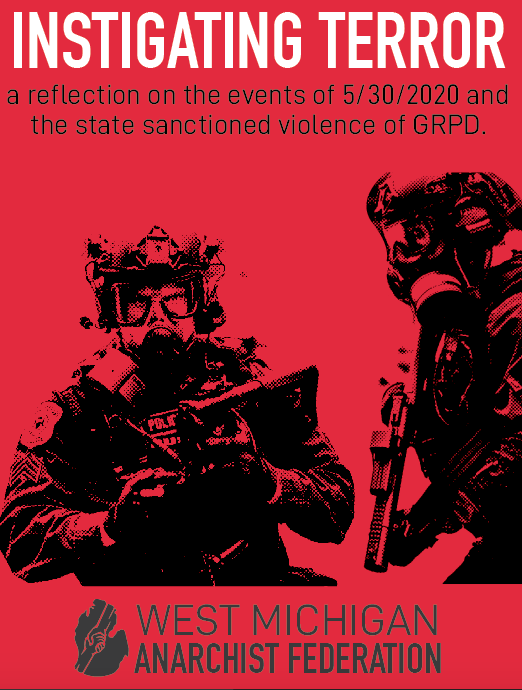

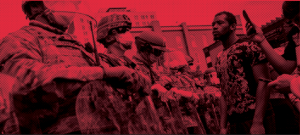
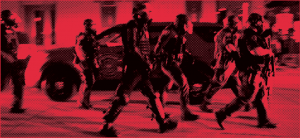
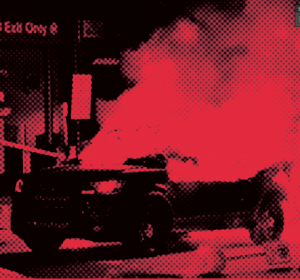
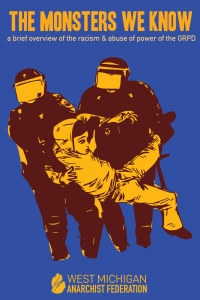
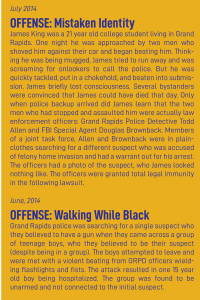
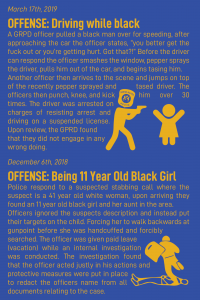
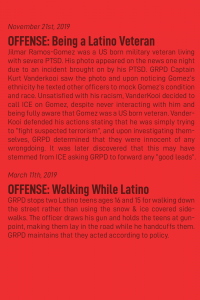
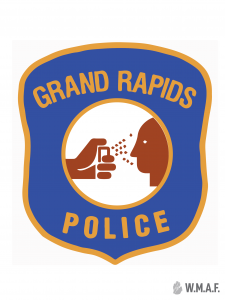
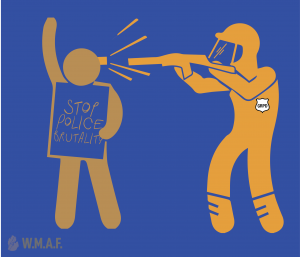
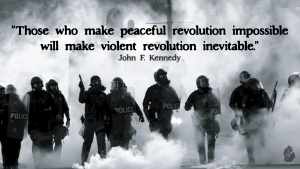 The Monsters We Know
The Monsters We Know
The AF is a decentralized organization made up of individual members who form into groups based on location. We have no leaders or central decision-making body and the direction of the organization is decided upon by its members. Members come together regularly to develop theory, strategy and tactics through debate and discussion, aiming for participation of all members in deci- sion-making such that effective consensus can be reached. Most decisions are made at Federal Delegate Meetings. Those who cannot attend these meetings can mandate any other member to act as their delegate to bring their positions to these meetings to ensure that their opinion is included.
The AF is based on a common set of aims and principles, with its structure detailed in the membership handbook. Before joining, a potential member must agree with the outlined aims and principles of the organization. In addition, we may adopt policies and analyses that are the result of discussion and elaboration by all the members. As these will be developed collectively, it is expected that they will reflect the views of the whole organization.
Members may propose changes to these structures, but it must be the result of a genuine change of view emerging from new ideas and experiences since their joining the organization. When an individual joins, it is expected that they join as a result of genuine agreement with the political and organizational principles of the AF. As membership is sponsored by a group or regional secretary it is their responsibility to ensure that new members fully understand these documents.
The AF seeks to act in a co-ordinated way, developing strategies and tactics through discussion and debate which members are expected to implement where appropriate.
Members must not act so as to undermine the federation but instead must seek to support the federation in practice and show solidarity for other members.
The individual does not subsume their identity into the collective. A member is one who has chosen to associate with others and retains their autonomy. If a member or group does not agree with policies, strategies or tactics adopted by the federation once they have become members, then they do not have to implement these decisions and may express their disagreement.
The AF works for the creation of an international libertarian communist movement. We believe this movement cannot be created without building a specific anarchist communist organization. We believe that for social revolution to be successful it will require the activity of this revolutionary organization as a part of the working class, while rejecting any idea that it acts as a self-appointed leader.
While being a member of the AF should not take over our entire lives, and personal circumstances make different levels of activity possible for different people, we are not a passive fan club for anarchy. It is hoped that all members will contribute in some way both to the development of our ideas and to our activities, both locally and throughout the federation, as and when they are able.
The WMAF has a similar decision making process to that of the European Anarchist Federation, though we have reworked it to reflect our structure and size.
General Decision Making
Due to the size & membership of the WMAF all decision making is conducted within internal meetings. We will typically reach a consensus through discussion though we will officially come to agreement through a vote of members.
Voting
If a proposal is called to vote then the exact wording is clarified by the facilitator and final positions in favor or against are tallied. If over one third of these votes are against the proposal then it fails at this time, otherwise it passes (though is subject to ratification). Abstentions do not factor into this result however all positions are minuted.
On occasion a vote will be called to decide between two different outcomes to the same issue. The facilitator will clarify the wording and tally the votes for each proposed outcome separately before taking votes. Any option which has over one third of votes against (not including abstentions) fails. If any versions still in the running, the one with the most votes in favour (or when tied the fewest votes against) will be the version which passes. If they are still deadlocked and accommodation cannot be reached through discussion then a further call to vote by simple majority vote between the options can be made. If this still fails to give a decision then the proposals require further discussion throughout the federation and fail at this time.
Action Points
When a proposal is passed by an WMAF it is expected that those at the WMAF will agree upon a set of action points that will be undertaken. These are the activities that members volunteer to take on to enact the proposal. These will be added to the minutes and considered part of the decision that is to be ratified.
Action points will be logged and monitored by the facilitator, who will provide an open record of any decisions relevant to the federation and any action points still outstanding on the internal forums.
For an anarchist organization to remain non-hierarchical and non-authoritarian it is essential that roles and responsibilities are distributed evenly. For federation-wide officer roles, we operate a formal structure of delegation and direct democracy with recallable delegates, meaning that if someone is not fulfilling responsibilities they can have those tasks passed on to someone else in a non-judgmental and supportive way for the good of the organization. Many roles are informal and temporary, however, and it is hoped that members will also fulfill these as best they can and in an accountable way. One of the key ways to support the organization is to anticipate something that needs doing and take some responsibility for seeing that it is addressed.
The organization is based on the following fundamental criteria:
Federalism
The AF is a decentralized organization made up of individual members who form into groups based on location. We have no leaders or central decision-making body and the direction of the organization is decided upon by its members. Members come together regularly to develop theory, strategy and tactics through debate and discussion, aiming for participation of all members in decision-making such that effective consensus can be reached. Most decisions are made at Federal Delegate Meetings. Those who cannot attend these meetings can mandate any other member to act as their delegate to bring their positions to these meetings to ensure that their opinion is included.
Political Unity
The AF is based on a common set of aims and principles, with its structure detailed in the membership handbook. Before joining, a potential member must agree with the outlined aims and principles of the organization. In addition, we may adopt policies and analyses that are the result of discussion and elaboration by all the members. As these will be developed collectively, it is expected that they will reflect the views of the whole organization.
Members may propose changes to these structures, but it must be the result of a genuine change of view emerging from new ideas and experiences since their joining the organization. When an individual joins, it is expected that they join as a result of genuine agreement with the political and organizational principles of the AF. As membership is sponsored by a group or regional secretary it is their responsibility to ensure that new members fully understand these documents.
Tactical Unity
The AF seeks to act in a co-ordinated way, developing strategies and tactics through discussion and debate which members are expected to implement where appropriate.
Collective Responsibility and Solidarity
Members must not act so as to undermine the federation but instead must seek to support the federation in practice and show solidarity for other members.
Free Association and Autonomy
The individual does not subsume their identity into the collective. A member is one who has chosen to associate with others and retains their autonomy. If a member or group does not agree with policies, strategies or tactics adopted by the federation once they have become members, then they do not have to implement these decisions and may express their disagreement.
As anarchist communists we fight for a world without leaders, where power is shared equally amongst communities, and people are free to reach their full potential. We do this by supporting working class resistance to exploitation and oppression, organize alongside our neighbors and workmates, host informative events, and produce publications that help make sense of the world around us.
The ruling class own and control the places that we work & live, the land that produces our food, and everything that makes life possible. They make the decisions about what kinds of products the factories make or what kinds of services are provided, and they make the decisions about how this work is organized. The rest of us, the working class, must work in the fields and the factories, the call centers and the office blocks, or else get by on benefits or scrape together what we need to survive.
We, the working class, build and provide everything society needs to function.
They, the ruling class, suck profit out of our work.
We are the body of society; they are parasites sucking us dry.
It follows from this that we don’t use the idea of class in the same way as many others, particularly in the press. Class is not about the fact that some of us earn more money than others or that we go to different kinds of schools. This confusion about the idea of class is part of a wider set of tactics that the ruling class use to try and disguise the reality of class from us.
Capitalism needs workers in a way workers simply do not need capitalism. If we were to unite around our common working class interests then we could do away with the ruling class and run society for ourselves. We don’t need them, but they need us. Because of this, the ruling class works hard to divide us against each other. It does this through trying to control ideas and the way we think about ourselves, and also through creating small differences in power and wealth that pit us against one another.
One of the major tools to create these divisions to is the state. The state is made up
of all the institutions that regulate and control the lives of ‘citizens’ – that is you
and me – for the benefit of capitalism. When the so called free market can’t achieve something that capital needs to grow, the state steps in and makes it happen. From building the legal and physical infrastructure that capitalism needs, through to directly attacking workers seeking to improve their position, the state is an essential tool of the capitalist class.
Importantly, the state maintains organizations to directly control and coerce us.
The army and the police most obviously use direct force to keep people in line, with the police breaking strikes and heads at home and the army enforcing capitalism abroad. Schools, whilst providing an important service, also indoctrinate children and prepare them for a life as workers rather than as human beings. Prisons, immigration authorities, dole offices and more, all intrude into our lives and shape our actions. Some of these things, like schools, hospitals and welfare benefits, we sometimes depend on for our lives. It is often this very dependence that acts to control us. Benefits come with conditions that dictate what we can and can’t do.
Some leftists argue that if the state were under the control of a group that represented the working class, usually a revolutionary party of some kind, then it would behave differently. This ignores the fact that the state is designed to govern from above – it is, by its very nature, hierarchical. This means that it always concentrates power in the hands of a minority. A small number of people give orders and a large number obey. The state is always hierarchical and as a result will end up furthering rather than destroying all the other hierarchies in society.
The power of the ruling class comes from their control of the means of production, but they keep that control by manipulating a whole series of different systems of oppression and exploitation, different hierarchies. These systems give large sections of the working class just a little bit of privilege. This is enough to turn them against those they should be uniting with, enough to make them defend the ruling class against those oppressed by gender, skin color, disability, and on and on and on. To get past this we need a revolutionary movement made up of many different organizations. We need many different ways in which we can take control of our own lives and fight the different oppressions that push us down. We need to completely transform society and ourselves. In the Anarchist Federation we believe that the ideas of anarchist communism offer the best chance of doing this.
Anarchist Communism
Anarchism is a set of revolutionary ideas that are, at root, very simple. Anarchists believe that we are all quite capable of looking after ourselves. No leader can know what you need better than you do. No government can represent the interests of a community better than the community itself. We believe that everyone should have the option to take part in decisions that affect them, wherever they take place. Only in this way can we have a fair and just society in which everyone has the chance to fulfill themselves. Everything in anarchist ways of thinking follows from this basic principle.
For anarchists, taking back control over our own lives is the revolution. We see two ways of working as being key to being able to do this: direct action and self-organization. Direct action is when those directly affected by something take action to fix it themselves, rather than asking someone else to do it for them. A strike that forces management to make concessioner face losing money is direct action where lobbying an MP or going through union negotiations is not. Squatting derelict land and turning into a community garden is direct action, whereas pressuring the council to clean up vacant lots is not. When we act by ourselves to achieve something that we need then we are taking direct action – whether that’s sharing food with others or fighting the police in a riot.
For direct action to be possible then there also needs to be self organization. This is organizing without leaders or phoney ‘representatives’, and it allows us to take back the power to make our own decisions. Self organization allows us to break down and overcome the hierarchies that separate us. In self-organized groups everyone has an equal say and no one is given the right to represent anyone else. This kind of group is capable of deciding its own needs and taking direct action to meet them in a way that any hierarchical group based on representatives – like a political party or a trade union – cannot.
Because of this we reject the use of the state – that is government, parliament, the courts, the police and so on – to bring about revolution. No one can free anyone else. We all have to free ourselves by acting together. No government, even a ‘socialist’ or ‘revolutionary’ government, can do this. Any group or party taking over the state simply becomes a new set of leaders, exploiting us in the name of ‘socialism’ rather than ‘capitalism’. This is what happened in so-called ‘communist’ Russia. Only by destroying the state, not taking it over, can we free ourselves.
For anarchists, direct action and self organization are essential tools for freeing ourselves. They are the way that we as a working class can confront the problems in our own lives collectively, working together against the whole system of capitalism and the ways it tries to divide us. These ideas have not just been plucked out of thin air. Anarchist communism is a living working class tradition that has worked in ways large and small throughout the history of capitalism. It does not come out of the abstract ideas of a few intellectuals but from the concrete actions of millions of people.
For many, the word communism is associated only with the brutality of Soviet Russia, or with Cuba, China, and North Korea. These societies are amongst some of the worst tyrannies the world has ever seen, killing millions through famine, war and execution. As anarchists we don’t forget the prison camps, the slave labor, or the unjust trials and executions – indeed anarchists were often the first to suffer these attacks.
However, unlike the press who use the example of ‘communist’ governments to claim that revolutionary change is impossible, anarchists also refuse to forget the example of the millions of people who have fought against this in the name of true communism. These people organized themselves, without leaders, into groups that used direct democracy, meaning that everyone had an equal say in how things were run. They used direct action, first against the state and capitalism, and later against the new Soviet rulers.
The true communism that they fought for is the extension of these ways of working into every aspect of life. The communist slogan ‘from each according to their ability, to each according to their need’ sums up the idea. Nobody should be short of anything that they need. Individuals receive goods and services because of how much they need them, not because of how much they can pay or how much they deserve them.
People give back to society, through the work they do, according to what they want and are able to do. Everyone will have the chance to do interesting and creative work, instead of just a minority while everyone else is stuck with boring drudge work.
This society would be organized through local collectives and councils, organizing themselves to make the decisions that need making and to do the work that needs doing. Everyone gets a say in decisions that concern them. We believe that in fighting for this kind of future we are fighting for the full freedom and equality of all. Only this will give everyone the chance to be whatever they can be.
It is the many examples of people organizing and resisting in this way that we call the communist tradition. The workers councils of revolutionary Spain, Germany, Russia, Hungary, France, and Mexico all give a small glimpse that we can look to when thinking about how we can fight capitalism and free ourselves. Time and time again the world has seen ordinary people using direct action, self organization and direct democracy to build new societies and lives for themselves. It is these ideas and successes that we try to build on in today’s fight against exploitation.
Anarchist communism is more than an abstract vision of the future and it is more than a nostalgia for the revolutionary movements of the past. It is a living working class tradition that lays the foundations for the future society in the here and now. Everything we will be after capitalism we must learn under it and through the fight against it. The revolution is not and never can be a blank slate – that way lies the corpses piled up by ‘revolutionary’ terror (such as happened in France, Russia, and China). Instead, revolution must be built out of the materials to hand by those of us alive today.
The content of this article originates from the first two sections of a pamphlet published by the Anarchist Federation titled: A Short Introduction to Anarchist Communism. To access the full text visit afed.org.uk